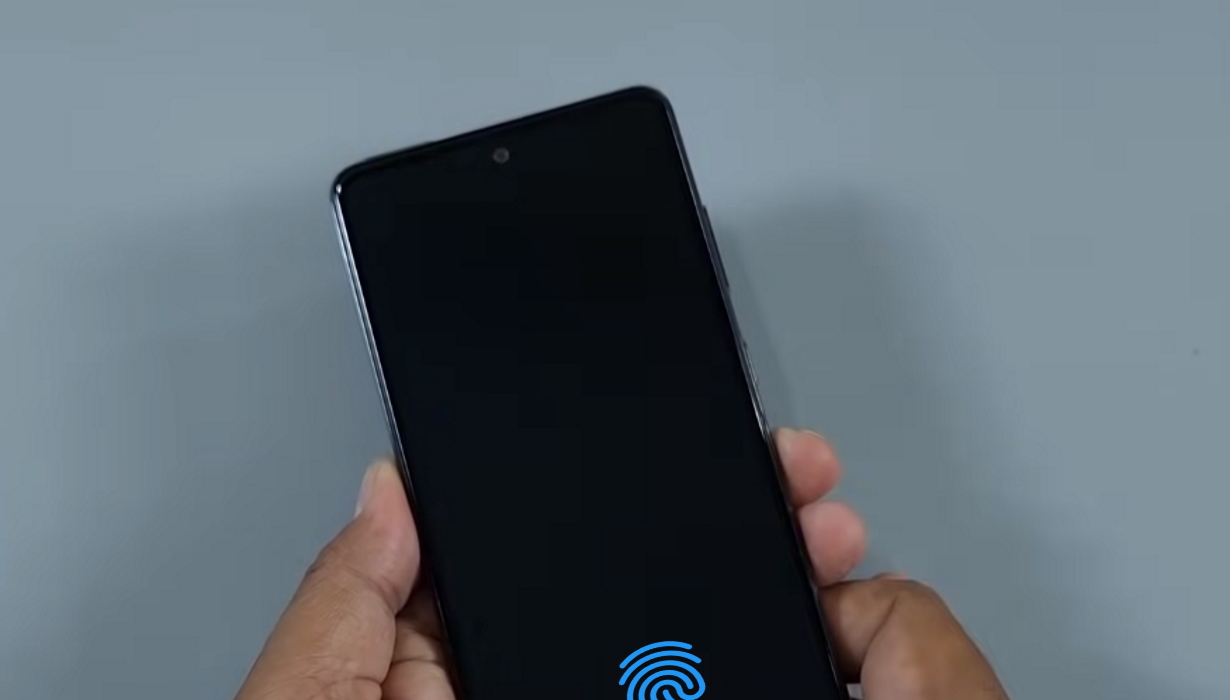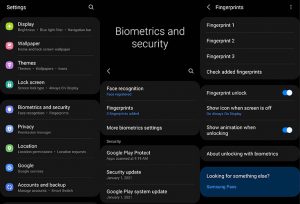Are you having trouble with the fingerprint scanner on your Samsung Galaxy A72? Is it not working as it should be? Don’t worry, we’ve got you covered with some effective solutions.
In this post, we’ve compiled a list of tips to help you troubleshoot and fix any issues with the fingerprint scanner on your Galaxy A72.
Tips to Fix Galaxy A72 Fingerprint Scanner Issue
1. Ensure your thumb is clean
If your thumb is dirty, it can mess with the fingerprint scanner. Make sure your thumb is clean to ensure the fingerprint scanner is able to read your fingerprints correctly.
2. Restart the phone
Sometime a minor software glitch can cause malfunction with the fingerprint sensor. Try restarting the phone and see if that fixes the problem. This will help refresh your phone and clear any existing system flaws that may be affecting the fingerprint sensor.
To restart the device, perform the following steps:
- Press and hold the side button and volume down key together until the Power Menu appears
- When the Power Menu appears, tap the “Power Off” or “Restart” button
3. Clean the screen
Make sure the screen is not dirty as that can interfere with the fingerprint sensor and cause it to stop working. If you notice dirt or smudges on the screen, wipe them off using a soft and clean cloth with an alcohol solution until they are removed completely.
4. Use compatible screen protectors
Make sure you use only compatible screen protectors. Using unofficial or unsupported screen protectors can not only cause touch issue but also impact the fingerprint sensor. If you are using unofficial screen protector, try removing it and see if that resolves the problem. If it doesn’t, proceed with the next solution.
5. Increase touch sensitivity
Certain screen protectors can impact the touch sensitivity of the screen and the fingerprint sensor may have trouble detecting fingerprints correctly. Try increasing the touch sensitivity of the screen and see if that helps fix the problem.
Here’s how to increase the touch sensitivity:
- Open Settings
- Then tap on Display
- Next tap the Touch sensitivity and toggle the switch On
6. Delete and add fingerprints
Your fingerprints can change overtime due to wear and tear and other factors. Try removing your old fingerprints and register new ones. When you rescan your thumb, do not press too hard. Just light touch your thumb on all sides. This will improve the fingerprint recognition.
Procedure to remove old fingerprints:
- Open Settings
- Scroll down and tap on Biometrics and security
- Tap on Fingerprints
- Type in the PIN, Password, or Pattern if prompted
- Select the fingerprints to remove. To select all, touch and hold a fingerprint then select All from the upper-left corner
- Tap on Remove (top right corner). Then confirm to remove the fingerprint(s)
Procedure to add new fingerprints:
- Go to Settings
- Tap on Biometrics and security
- Tap on Fingerprints
- Type in the PIN, Password, or Pattern when prompted
- Tap Add fingerprint. Enter the current PIN, Password, or Pattern if prompted
- Follow the on-screen tutorial to scan your fingerprint
- Tap Done to add the fingerprint
Note: Ensure the screen protectors are removed from the phone and your fingers are cleaned properly before proceeding with the new fingerprint registration.
7. Update software
Sometimes a bug in the software can also cause the fingerprint sensor problem. Try updating the software and see if that resolves the problem. To check and install software updates, perform the following procedures.
- Go to Settings
- Tap on Software update
- Then tap on Download and install to download and install the update.
8. Wipe system cache partition
You can also try wiping the system cache partition in order to rebuild the cache data and files from scratch which can help eliminate any error that is causing issues with the fingerprint sensor. To wipe the system cache partition, perform the following steps:
- Turn off your phone
- Connect your phone to the PC via USB
- Wait until the message shows your phone is being charged
- Press and hold the Volume Up key and the Power key.
- Continue to hold both keys until Android Recovery menu options appear
- Press the Volume down key and navigate to Wipe cache partition
- Press Power key to select
- Press the Volume down key to highlight Yes, then press the Power key to select
- When the process is complete, Reboot system now is highlighted
- Press the Power key to restart the device
9. Factory reset the phone
If none of the above solutions work, you may try factory restore as the last resort. But before you do so, back up all your important data and files as the procedure will erase them completely.
To perform factory reset, follow the steps below:
- Go to Settings
- Tap on General management
- Tap on Reset
- Tap on Factory data reset
- Scroll down and tap on the Reset button
- Tap the Delete all button to proceed with the reset
Alternatively, if you are locked out of your device, you can use another method to perform the reset. Here’s how to do that.
- Turn off your phone
- Connect your phone to the PC via USB
- Wait until the message shows your phone is being charged
- Press and hold the Volume Up key and the Power key.
- Continue to hold both keys until Android Recovery menu options appear
- Press the Volume down key and navigate to Wipe Data/Factory Reset
- Press Power key to select
- Press the Volume down key to highlight Factory data reset, then press the Power key to select
- When the reset process is complete, Reboot system now is highlighted
- Press the Power key to restart the device
Conclusion
If none of these solutions are working, the problem is most likely a hardware defect. Visit your nearest Samsung care center for further assistance.


